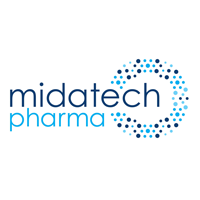Midatech Pharma PLC (LON:MTPH; Nasdaq: MTP), an R&D biotechnology company focused on improving the bio-delivery and biodistribution of medicines, has announced the enrolment of the first patient into its Phase 1 study of MTX110 in recurrent glioblastoma (rGB) (NCT 05324501) at the Preston Robert Tisch Brain Tumor Center at Duke University, USA.
The Phase I study is an open-label, dose escalation study designed to assess the feasibility and safety of intermittent infusions of MTX110 administered by convection enhanced delivery (CED) via implanted refillable pump and catheter. The study aims to recruit two cohorts, each with a minimum of four patients; the first cohort will receive MTX110 only and the second cohort will receive MTX110 in combination with lomustine.
Midatech has previously reported encouraging results from a Phase I study of MTX110 in diffuse intrinsic pontine glioma (“DIPG”) conducted by University of California, San Francisco with an additional Phase I study of MTX110 in DIPG conducted by Columbia University expected to report shortly. In addition, a Phase I study of MTX110 in medulloblastoma is being undertaken at the University of Texas.
MTX110 has been granted Orphan Drug and Fast Track designations by the FDA and Orphan Medicinal Product designation by EMA.
Commenting, Annick Desjardins, MD, FRCPC, neuro-ongologist, professor of neurosurgery and neurology at Duke University and study’s principal investigator, said: “We are excited to be a leading center for the MAGIC-G1 study that is looking to overcome the limited penetration of panobinostat through the blood-brain barrier by its direct administration into the tumor, thus also potentially avoiding systemic toxicity.”
Commenting, Dmitry Zamoryakhin, MD, MBA, CSO of Midatech Pharma, said: “rGB is a devastating and incurable cancer marked by short survival rates and universal recurrence. A start of recruitment into the MAGIC-G1 study marks a significant step towards developing a potential new treatment paradigm for patients with this devastating disease that currently has limited effective treatment options.”
Sources:
(1) Low JT, Ostrom QT, Cioffi G, Neff C, Waite KA, Kruchko C, Barnholtz-Sloan JS. Primary brain and other central nervous system tumors in the United States (2014-2018): A summary of the CBTRUS statistical report for clinicians. Neurooncol Pract. 2022 Feb 22;9(3):165-182. doi: 10.1093/nop/npac015. PMID: 35601966; PMCID: PMC9113389.
(2) Stupp R, Taillibert S, Kanner AA, et al. Maintenance Therapy With Tumor-Treating Fields Plus Temozolomide vs Temozolomide Alone for Glioblastoma: A Randomized Clinical Trial. JAMA : the journal of the American Medical Association. 2015;314(23):2535-2543.
Chinot OL, Wick W, Mason W, et al. Bevacizumab plus radiotherapy-temozolomide for newly diagnosed glioblastoma. N Engl J Med. 2014;370(8):709-722.


